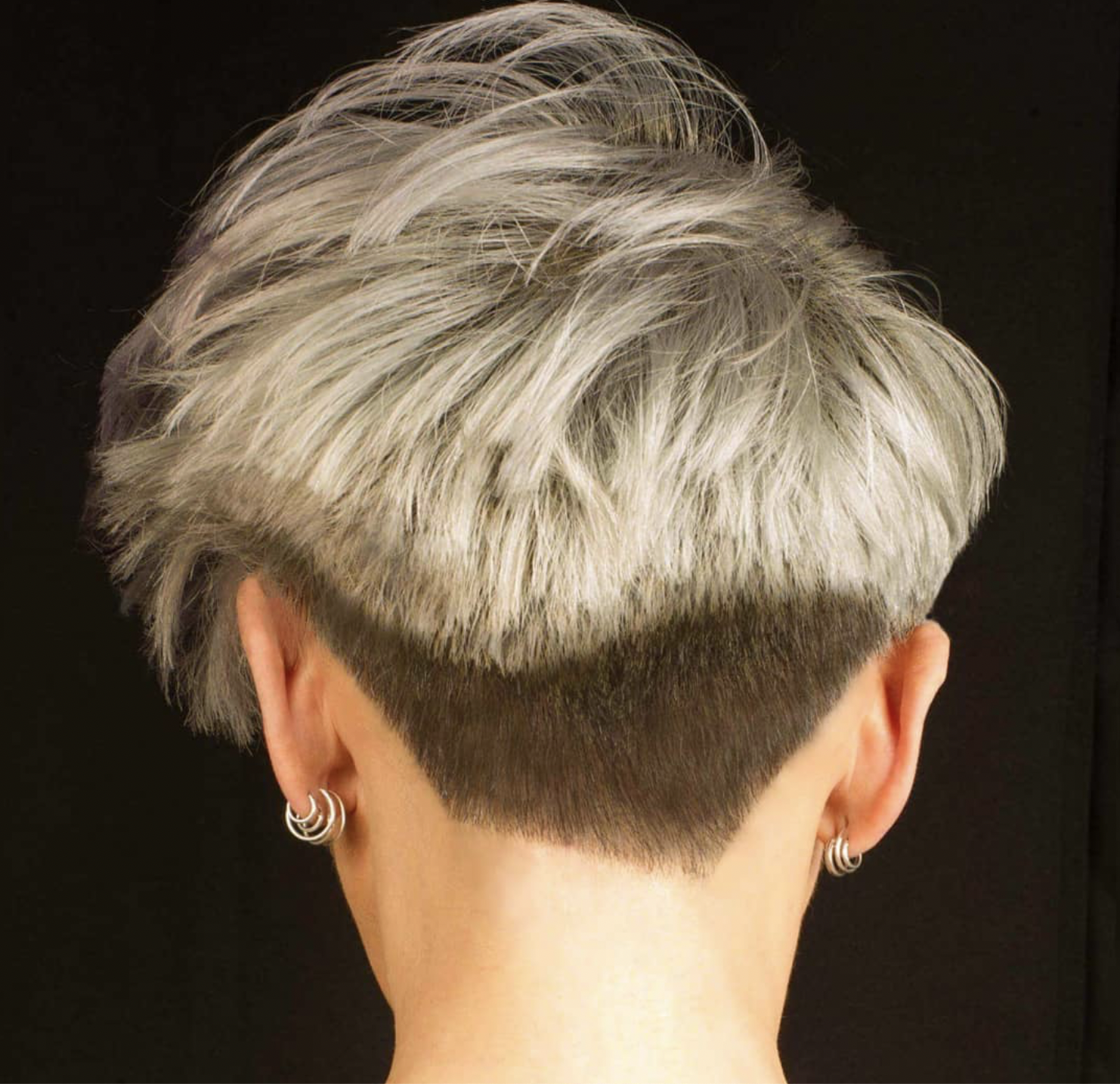A hair stylist was struggling, having started late in my career. Back in the day, most beauticians began their careers right out of junior high school, but I didn’t start until I was in my twenties. On top of that, I suffered from a severe skin allergy that left me unable to move my fingers for five years. My peers were already in the spotlight behind the chairs, while I was washing their clients’ hair, staring at their backs. Their growth in the industry was glaring and painful for me to watch.
I questioned myself: What had I done to put myself in this position? All I wanted was to help a friend who also suffered from a skin condition. I took over his shampoo tasks, not realizing that I could end up in the same situation. In just one year, I ruined my hands and essentially traded places with him.
I needed to catch up with others as quickly as possible. For a year, I attended every small teaching session I could find on my one day off each week. I was planning to quit if I couldn’t turn things around because the big 3-0 was looming. In Japan, changing careers after 30 is notoriously difficult.
During my studies, I encountered an interesting theory on the market called “THE DIGICUT.”
After my experience with mogul riding, I realized there was a way to control the random bounces caused by bumps on the head shape. The anatomy poster at the doctor’s office gave me a hint to map hair growth patterns on the head. At that point, I was searching for a 3D mapping system of hair growth patterns. It was an expensive class—I spent $4,000 on a four-day session, which included a pair of specialized $2,000 scissors. The cost was three times of my monthly income.
We started by drawing a grid on the head shape and scanning hair growth patterns in quarter-inch sections. The method used a 2D sheet, so it didn’t show the roundness of the head. But thanks to my prior study of anatomy, I could easily translate it into 3D in my mind. The technique for controlling irregular hair growth patterns was unique. They used special thinning scissors to create a triangular support base, which helped manage the compressed hair. It surprisingly worked as promised; we could style hair using only a blow dryer and our fingers.
However, I soon found flaws in this method. Leaving a bunch of short hair all over the head wasn’t good for the hair’s health, and it didn’t create better texture afterward. The worst part was that these random short hairs near the roots could enhance unruly hair movement, like poofing or random flips, after a few weeks. As we know, hair grows out, and these issues would only worsen over time. The special made $2000 scissors would never held in my hand ever after.
Despite its flaws, the grid system and hair growth pattern reading technique became fundamental to my haircutting method.
My biggest question was, why did this triangular inner support work to control hair flow like that? It was both surprising and intriguing to me
遅咲きのヘアースタイリストは行き詰まっていました。昔はほとんどの美容師が中学校を卒業したばかりでキャリアを始めていましたが、私は20代になってから始めました。さらに、ひどい皮膚アレルギーに悩まされ、5年間もの間、指がろくに動かせない状態でした。同僚たちだけでなくかつての部下達までも、すでに美容師デビューを果たし注目を浴びている中、私は彼らのクライアントの髪を洗いながら、彼らの背中を眺めていました。業界での彼らの成長は、私にはまぶしく、痛みを伴うものでした。
私は自分に問いかけました:どうしてこんな状況に陥ってしまったのだろう?友人の皮膚疾患の手助けをしたい一心で、彼のシャンプー業務を引き受けることになりましたが、自分も同じ状況に陥るとは思いませんでした。わずか1年で、私は自分の手をダメにし、実質的に彼と同じ立場になってしまいました。
私は他の人たちにできるだけ早く追いかなければなりませんでした。1年間、毎週1日の休みを使って、どんな小さなクラスにもすべて参加しました。30歳という大きな節目が迫っていたため、状況が改善しなければ辞める覚悟でした。日本では、30歳を過ぎてからのキャリア変更は非常に難しいからです。
手当たり次第勉強している間に、「THE DIGICUT」という非常に興味深い理論に出会いました。
モーグルライディングの経験を通じて、頭の形によるランダムなバウンスをコントロールする方法を見つけ、病院の待合室にあった解剖学のポスターが、髪の成長パターンを頭にマッピングするヒントを与えてくれました。その時点で、私は髪の成長パターンの3Dマッピングシステムを探していました。DIGICはとても高額なクラスで、4日間のセッションに$4,000を費やし、$2,000の専門的なハサミも含まれていました。その費用は私の月収の3倍でした。
私たちは頭の形にグリッドを描き、髪の成長パターンを1/4インチごとにスキャンしました。この方法は2Dシートを使用していたため、頭の丸みは表示されませんでした。しかし、以前の解剖学の勉強のおかげで、頭の中で簡単に3Dに翻訳するできました。不規則な髪の成長パターンをコントロールする技術は独特でした。特殊な隙ハサミを使って三角形の支えを作り、凹み倒れた毛束をお越す事で動かしやすくするという理論でした。それは驚くほど効果的で、先輩美容師は作業中の私の事を馬鹿にしてみていましたが、ドライヤーと指だけで髪をスタイリングすることが可能になりました。
しかし、やがてこの方法に欠点がある事を見つけました。頭全体に短い髪が残ることは髪の健康には良くないばかりか、最も最悪なのは、根元近くのランダムな短い髪が、数週間後に髪の動きを乱す原因になることでした。髪が長く伸びるにつれて、これらの問題は時間とともに悪化していきます。そのため、$2,000の特別なハサミは二度と手にすることはありませんでした。
欠点があったにもかかわらず、DIGICで学んだグリッドシステムと毛流パターンの読み取り技術は、私のヘアカット技法の基盤となりました。
私が最大の疑問に思ったのは、この三角形の内側のサポートがなぜ髪の流れをコントロールするのに効果的なのかということでした。それは私にとって驚きであり、興味深いものでした。
This Blog [Less Distorted Hair Designing] will be published every first of the month and 15th of the month.
このブログ[歪みの少ないヘアーデザイニング]は毎月一日と十五日の2回更新されます。
Written by Koji Kuninaga



![Less Distorted Hair Designing [19 Rail Road Truck]](https://bbmemehairsalon.com/wp-content/uploads/2024/08/Screen-Shot-2024-09-02-at-10.34.47-AM-500x383.png)
